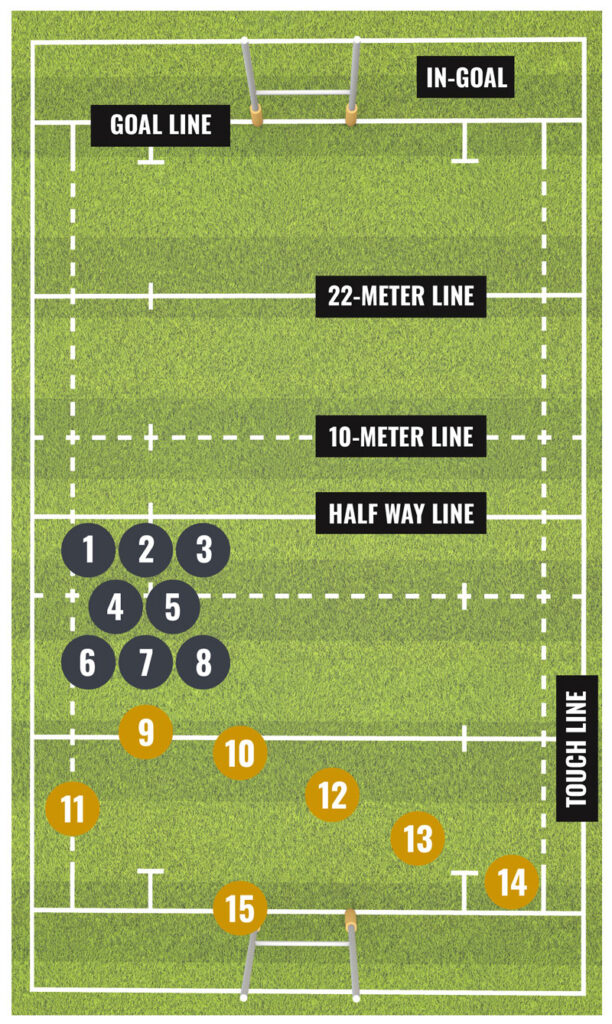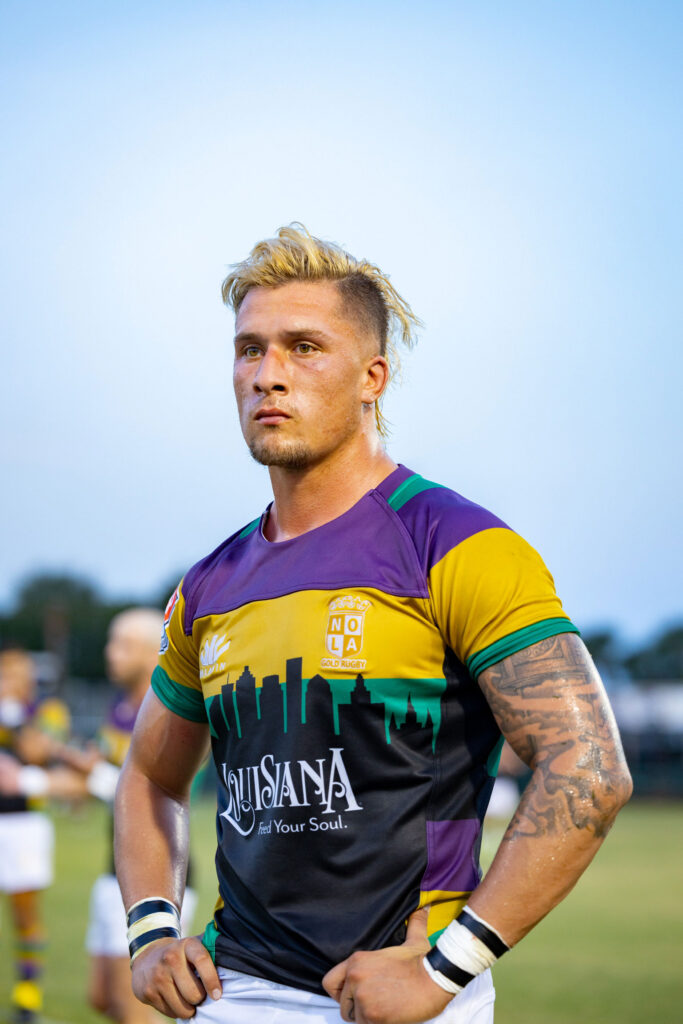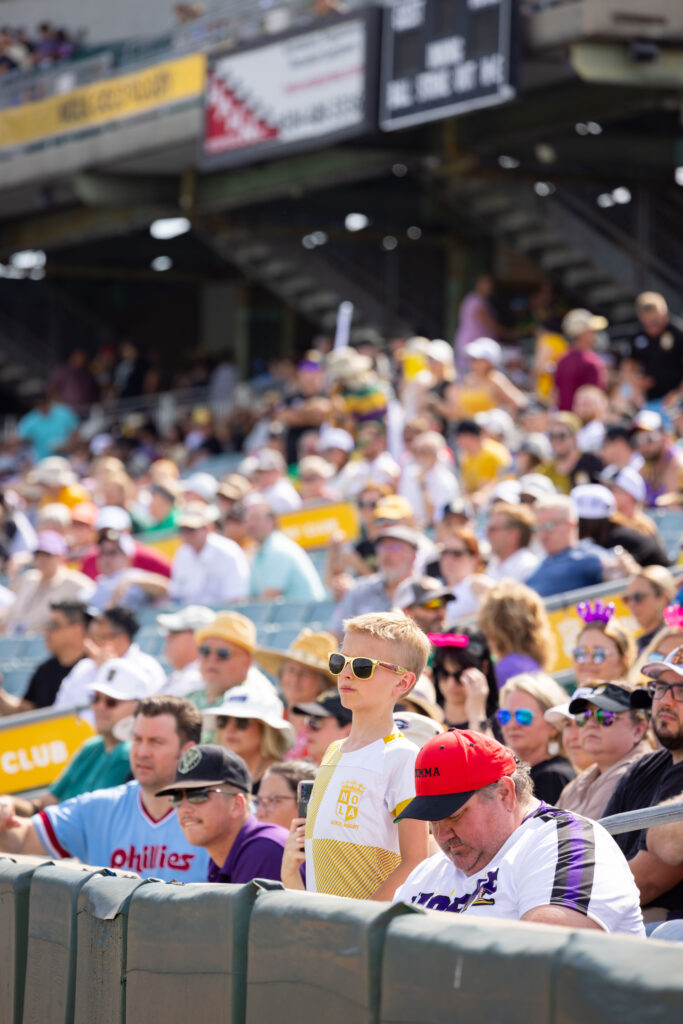Welcome to Rugby 101
Discover the Basics of Rugby
Rugby is more than just a sport; it’s a dynamic and intense game of strategy, skill, and teamwork. If you’re new to rugby, don’t worry—we’ve got you covered. Here, you’ll learn the fundamentals that make rugby so exciting and why it’s become a beloved sport across the globe.
What is Rugby?
Rugby is often compared to American football, but the game flows more continuously, with no forward passes or blocking. The goal is simple: carry the ball over the opponent’s goal line and ground it to score a try. Rugby is known for its physical intensity and strategic gameplay, combining elements of football and soccer.
“Rugby is a hooligans game played by gentlemen.”
THE ESSENCE OF RUGBY
Rugby, often compared to Football, is a game where the objective is to carry the ball across the opponent’s goal line and ground it to score a try. Unlike Football, Rugby involves continuous play, with no forward passes or blocking allowed.
THE SPIRIT OF RUGBY
Rugby combines the physicality of football with the strategic flow of soccer, creating a fast-paced game driven by teamwork and respect. Played in two intense 40-minute halves, rugby is more than a sport—it’s a culture of resilience, sportsmanship, and loyalty, both on and off the field.
OBJECTIVES OF THE GAME
In Rugby, two teams of 15 players each aim to earn the highest score by running, passing, kicking, and grounding the ball. The core principles of fair play and sportsmanship are upheld in every aspect of the game in accordance with the Rugby Laws.
History of Rugby
The Art of Safe Contact
Although rugby players don’t wear pads or helmets like in American football, the sport’s techniques and rules emphasize safer physical contact. Players are trained to use their arms and shoulders when tackling, and any contact above the shoulders or dangerous play results in serious consequences. In Rugby Fifteens, players who violate these rules receive a yellow card, forcing them to sit out for 10 minutes; in Rugby Sevens, the penalty is 2 minutes. Serious offenses can result in a red card, leading to the player’s ejection and potential suspension for weeks, making safety a top priority.
About Major League Rugby (MLR)
Major League Rugby (MLR) is the premier professional rugby league in North America, showcasing the highest level of rugby competition on the continent. Since its debut in 2018 with seven teams, MLR has expanded to 12 teams for the 2024 season, driving the sport’s rapid growth across the United States and Canada.
The Rise of Rugby in North America
In just seven years, MLR has sparked a rugby revolution throughout North America, building excitement as we head toward the 2031 Rugby World Cup, hosted by the United States. From its inaugural season, MLR has brought rugby to a wider audience through key broadcast partnerships and continues to evolve with each passing year.
The talent on the field has skyrocketed, thanks to top international players joining the league and the strengthening of American rugby pathways. MLR’s Collegiate Draft serves as a direct route for aspiring players to go pro, while the league’s Grassroots Development Incentives focus on youth rugby, ensuring the next generation is well-prepared to take the field.
Why Our Fans Love Rugby

Rugby is beloved by fans and players alike for its unmatched blend of physicality, strategy, and speed. Whether you’re drawn to the hard-hitting action or the communal spirit that brings fans and players together after every match, MLR offers a unique sports experience unlike any other.
Fans rave about rugby’s dual appeal—some love the fast-paced, high-energy gameplay, while others appreciate the post-match camaraderie, where players and supporters from both teams celebrate together. It’s not uncommon for fans to be coached by a professional rugby player during the day and then cheer them on under the lights that same evening.
How to Watch Major League Rugby
MLR delivers fast, thrilling, and hard-hitting matches that embody a distinctly North American take on the global game of rugby. Fans can catch the action on Fox Sports and other national or local channels, while select matches are streamed live in North America on The Rugby Network. All matches are available for international fans to stream on The Rugby Network.
Stay connected with Major League Rugby on Instagram, Twitter, Facebook, and LinkedIn to get the latest updates and never miss a moment of the action!
GAMEPLAY MECHANICS
ADVANTAGE PLAY
Play does not stop for minor infringements if the non-offending team gains an advantage. This allows for fluid and continuous gameplay.
POST-TACKLE DYNAMICS
Maul: When an opponent holds the ball carrier but remains on their feet, supported by teammates.
RESTARTING THE GAME
Line-Out: When the ball goes out of bounds, a line-out is formed by both teams, mirroring basketball’s jump-ball to resume play.
SPECIAL PLAYS
Grubber Kick: A strategic kick where the ball rolls along the ground to be regained by the attacking team.
Post-Try: Following a try, a conversion kick presents an opportunity to add an extra 2 points by kicking the ball between the uprights from anywhere along a line parallel to the goal line.
INFRINGEMENTS
Knock On: A fumble or mishandling that propels the ball forward results in a scrum awarded to the opposing team.
SCORING SYSTEM
Automatic 7 Point Try: Grounding the ball in the center for a try under the post, 7 points awarded with no conversion kick needed.
Conversion Kick: After a try, 2 points are awarded for kicking the ball between the goalposts.
Penalty Goal/Drop Goal: Each successful kick scores 3 points.
Penalty Try: Awarded for specific infringements by the opposing team, resulting in 7 points.
Positions Explained
Rugby positions are split into Forwards (the bigger, stronger players) and Backs (the faster, more agile players). Here’s a quick rundown:
Forwards (1-8): The engine of the team, engaging in scrums, lineouts, and securing possession in rucks and mauls.
Backs (9-15): Speed and agility are their trademarks, tasked with advancing the ball and creating scoring opportunities.
BACKS (JERSEY NUMBERS 9-15):
This dynamic group includes the Scrum Half (9) through to the Full Back (15). Unlike their teammates in the scrum, these players generally do not engage in scrums and lineouts, except for the Scrum Half. Renowned for their speed, agility, and capacity for evasive maneuvers, these roles are akin to the wide receivers and running backs in American football, tasked with advancing the ball and creating scoring opportunities.
FORWARDS (JERSEY NUMBERS 1-8):
The Forwards, donning jerseys numbered from 1 to 8, are the rugby equivalent of a football team’s linemen due to their larger build and physical prowess. They are the core of the scrum and lineouts. Their primary responsibilities include engaging in scrums, lineouts, rucks, and mauls. Contrary to linemen in football, Forwards are also involved in ball-handling during open play.
FRONT ROW
This term refers to the trio of players at the forefront of the scrum, consisting of the Loose Head Prop, Hooker, and Tight Head Prop. They are crucial in securing and maintaining the scrum’s stability.
LOOSE FORWARDS
A term that collectively describes the Flankers and the Number 8 player. These positions are pivotal in securing possession and providing support in both open play and set pieces like scrums and lineouts.

REFEREE SIGNALS EXPLAINED
Referee signals are a crucial aspect of the game, instantly conveying the nature of the play that has just transpired. These signals are the referee’s tools for communicating with players and the audience, clarifying the reasons behind penalties, awarding free kicks, acknowledging advantages, and confirming scoring plays. As the arbiter of time in the game, the referee’s word on the duration of play is final.

ADVANTAGE
SCRUM FEED AWARD
The privilege of introducing the ball into the scrum is indicated by the referee pointing horizontally at waist level towards the side awarded the feed while facing the sideline.
FORWARD PASS
To signal a forward pass, the referee will perform a pronounced hand motion resembling a forward throw. The team not responsible for the error is granted the scrum.
HANDLING IN A RUCK OR SCRUM
For a handling infraction in a ruck or scrum, the referee leans forward and mimics moving a ball on the ground with a back-and-forth arm motion.
OBSTRUCTION
Crossing both arms over the chest, the referee signals an obstruction – akin to a pair of open scissors; this gesture informs all that a player has illegitimately hindered another.
BALL KILLING
If a player fails to remain on their feet while joining a ruck, the referee will point downwards and oscillate the arm to signal the infringement to all players.
KNOCK-ON
A knock-on is indicated by the referee lifting an arm high, swaying the open hand back and forth, then tapping the palm with the other hand, signaling to everyone that the ball has been propelled forward unlawfully.
FREE KICK
A free kick is awarded when the referee’s arm is raised and bent at a right angle at the elbow, pointing towards the team that has earned the kick.
PENALTY KICK
Facing the sideline, the referee extends an arm upwards and diagonally, designating the non-offending team’s right to choose between a penalty kick or a scrum.
LINEOUT IRREGULARITY
An irregular lineout throw is signaled by the referee lifting one arm straight up, aligning the shoulders with the touchline, and waving the arm back and forth to indicate the ball was not thrown straight.
TRY/PENALTY TRY
Upon a try or penalty try, the referee positions themselves on the try line, facing the scoring team, and raises an arm vertically while blowing the whistle, turning their back to the dead-ball line.
HIGH TACKLE
To signal a high tackle, the referee extends an arm vertically in front of the face, below the chin, alerting all to the commission of a high tackle infraction.

master the ins and outs of the game
Ready to Learn More?
Want to dive deeper into rugby’s rules, positions, and plays? Whether you’re new to the game or looking to sharpen your knowledge, we’ve got you covered! Explore our complete Rugby Guide to master the ins and outs of the game and get match-day ready for NOLA Gold Rugby. Or, take it a step further with a FREE Rugby 101 session—either in person or via Zoom. In this interactive session, you’ll dive into the rules, terminology, strategy, and history of rugby in an engaging way, perfect for all skill levels.


